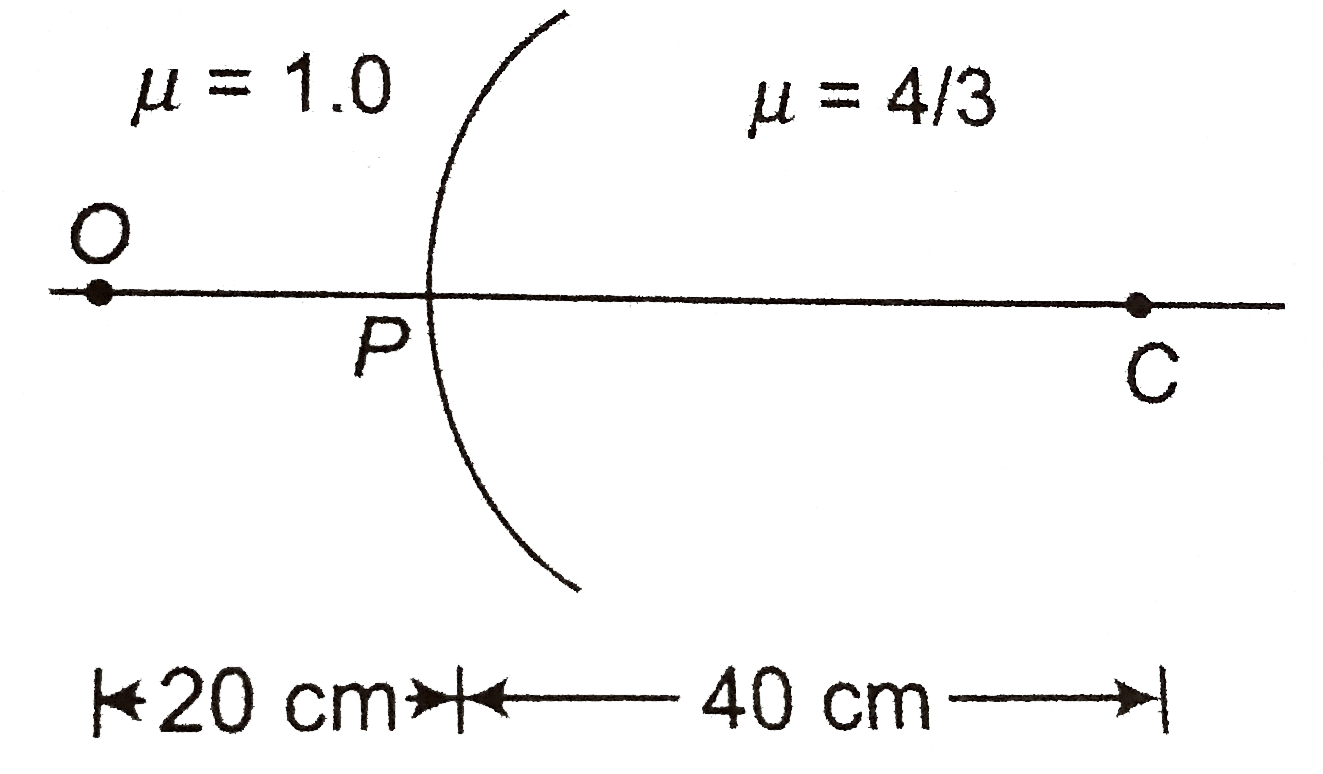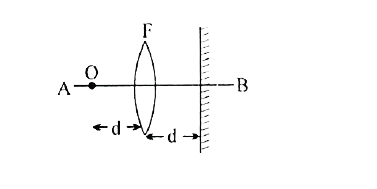In the figure shown , a point object O is placed in air on the principal axis. The radius of curvature of the spherical surfaces is 60cm. I is the final image formed after all reflections and refractions.
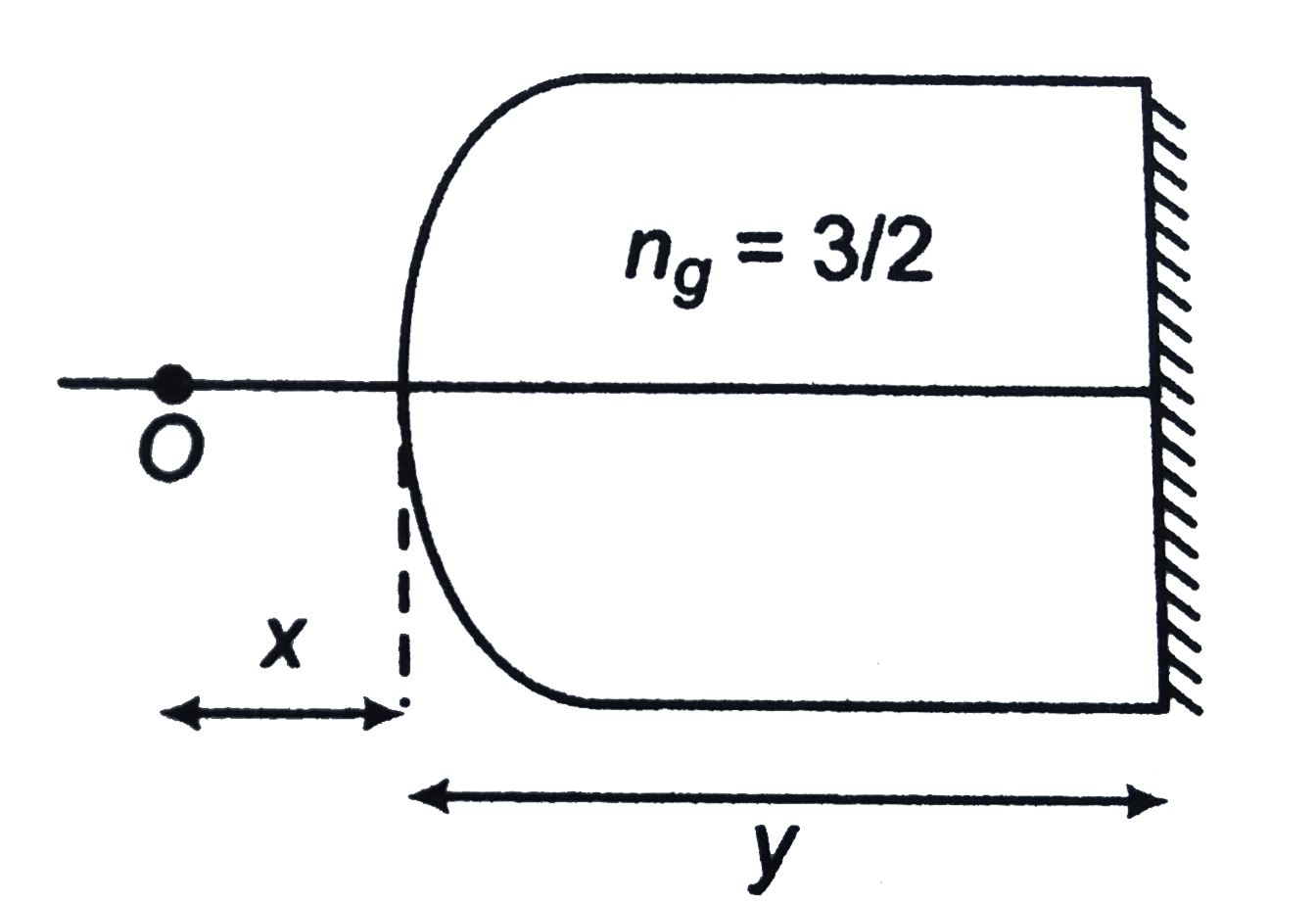
If x=120cm, then I is formed on O for any value of y
If x=240cm, then I is formed on O for any value of y=360cm
If x=240cm, then I is formed on O for any value of y
None of these
The correct Answer is:A
Using μ2u−μ1u=μ2−μ1R we get
3/2∞−1.0−x=3/2−1+60
∴x=120cm
Hence, for x=120cm, rays of light becomes
parallel to principal axis and fall normal to
polished surface.
Hence, rays retrace their path.
Topper's Solved these Questions
- REFRACTION OF LIGHTBook:DC PANDEYChapter:REFRACTION OF LIGHTExercise:Single Correct Option
Explore 3 Videos
- REFRACTION OF LIGHTBook:DC PANDEYChapter:REFRACTION OF LIGHTExercise:more than one correct option
Explore 1 Video
- REFRACTION OF LIGHTBook:DC PANDEYChapter:REFRACTION OF LIGHTExercise:Subjective Questions
Explore 8 Videos
- REFLECTION OF LIGHTBook:DC PANDEYChapter:REFLECTION OF LIGHTExercise:Subjective
Explore 9 Videos
- SEMICONDUCTORSBook:DC PANDEYChapter:SEMICONDUCTORSExercise:Subjective
Explore 12 Videos
Similar Questions
Knowledge Check
In the figure, a point object O is placed in air. A spherical boundry separates two media of radius of curvature 1.0m. AB is principal axis. The separation between the images formed due to refraction at spherical surface is
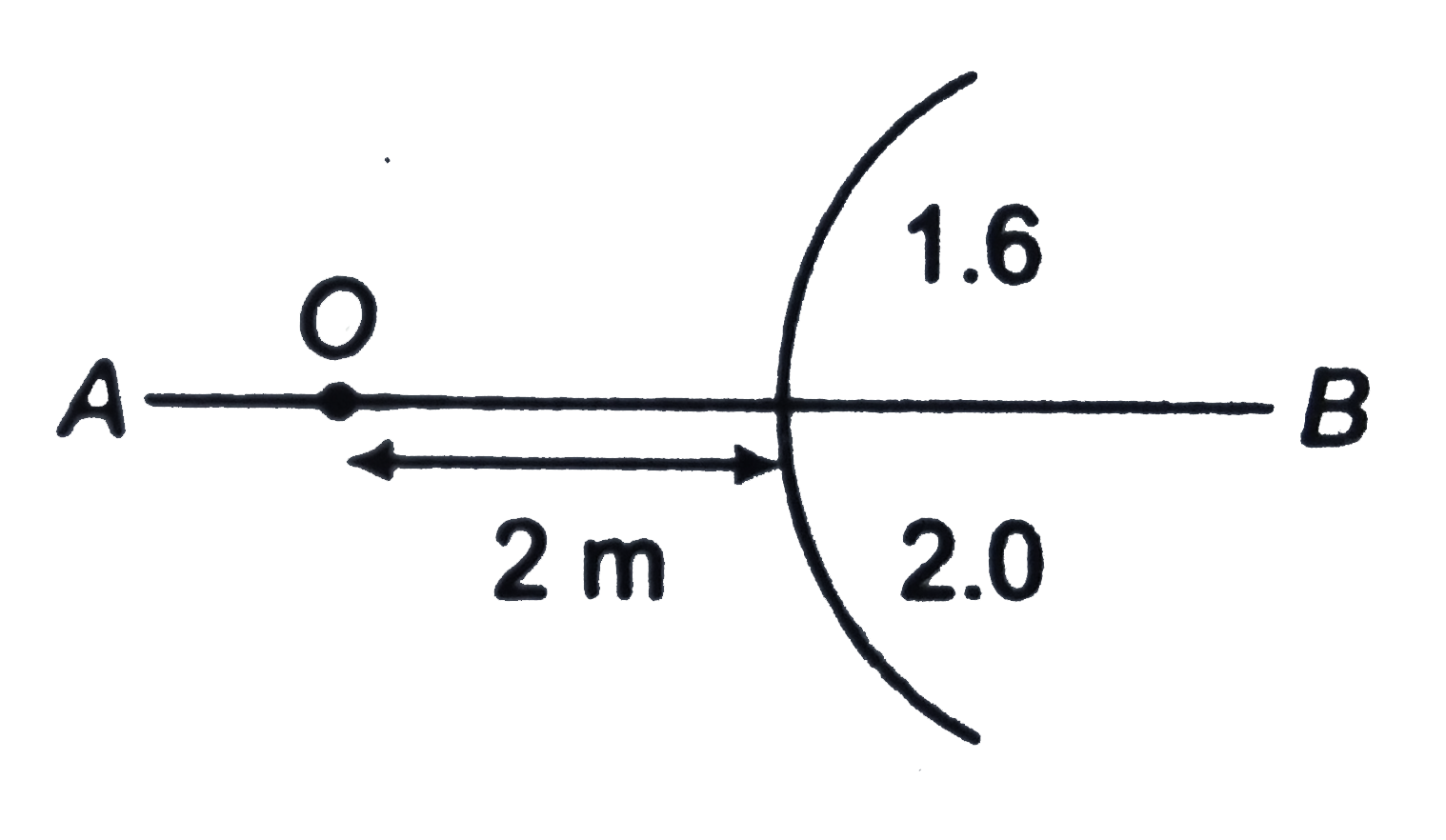 A12mB20mC14mD10m
A12mB20mC14mD10mA point object is placed on the principal axis of a spherical mirror. The object -distance u is
Adefinitely negativeBdefinitely positiveCpositive if the object is to the left of the centre of curvatureDpositive if the object is to the right of the centre of curvatureAn object of height 0.5 cm is placed laterally in the medium of refractive index m = 1.5 at a distance 100 cm away form the pole. The radius of curvature of the surface is 20 cm. The height of the image formed after refraction is
 A0.8 cmB1 cmC0.25 cmD1.5 cm
A0.8 cmB1 cmC0.25 cmD1.5 cm
All objects referred to the subsequent problems lie on the principal axis.
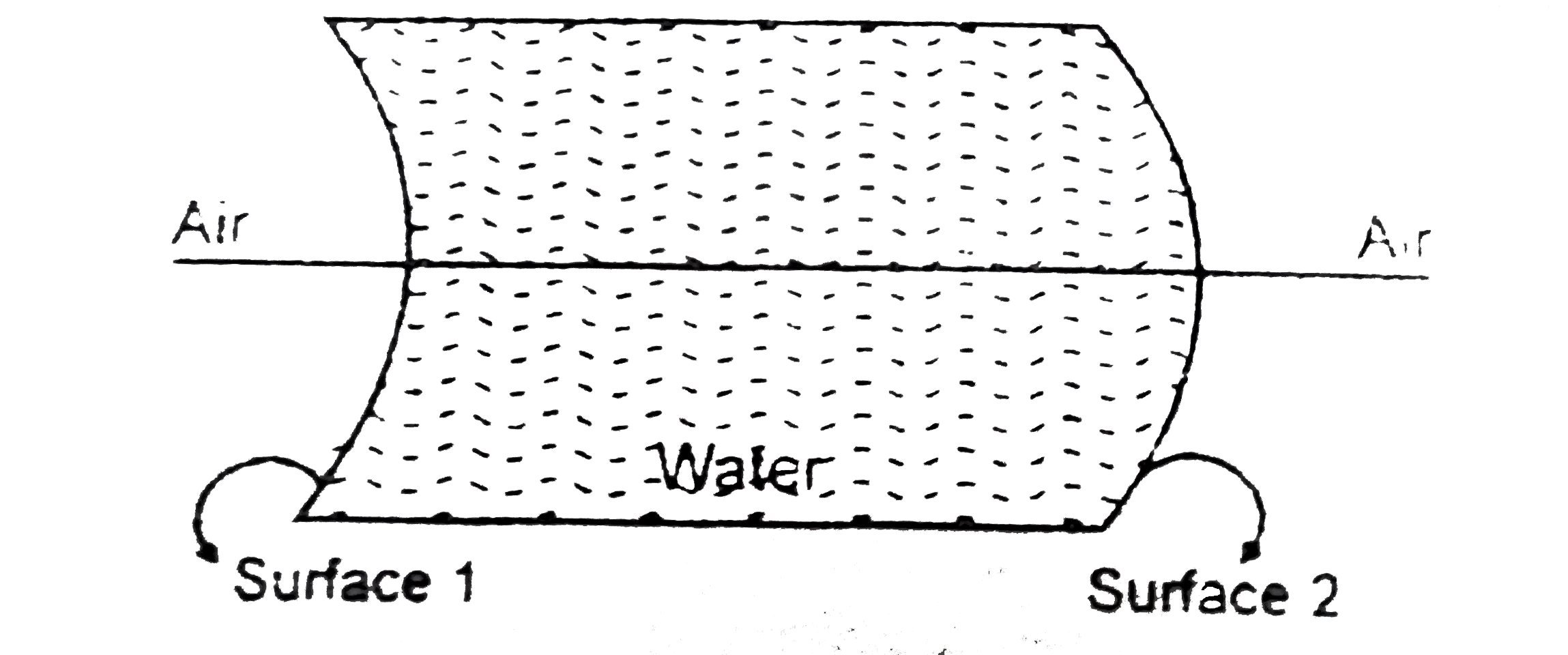
In above question if the object is real, then the final image formed after two refractions :
View SolutionIn the figureshownm the image of a real object is formed at point I. AB is the principal axis of the mirror. The mirror must be

View SolutionA point object O is placed in front of a glass rod having spherical end of radius of curvature 30cm. The image would be formed at

View SolutionA point object O is placed in front of a glass rod having spherical end of radius of curvature 30cm. The image would be formed at

View SolutionIf an objects is placed 10 cm from a convex mirror of radius of curvature 60 cm, then the position of image is
View Solution

